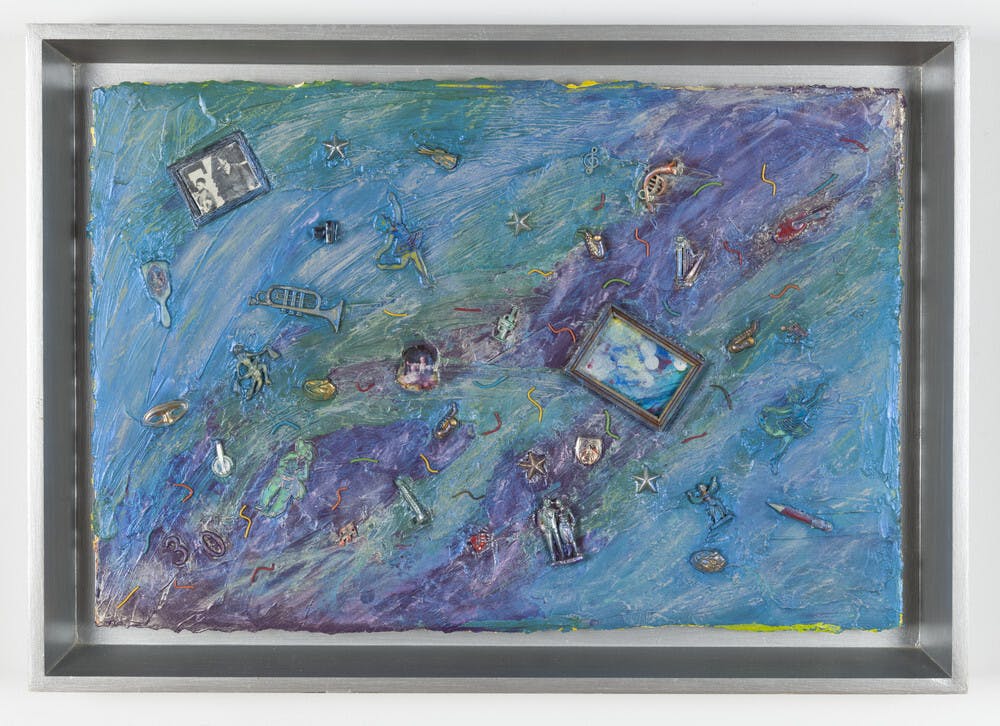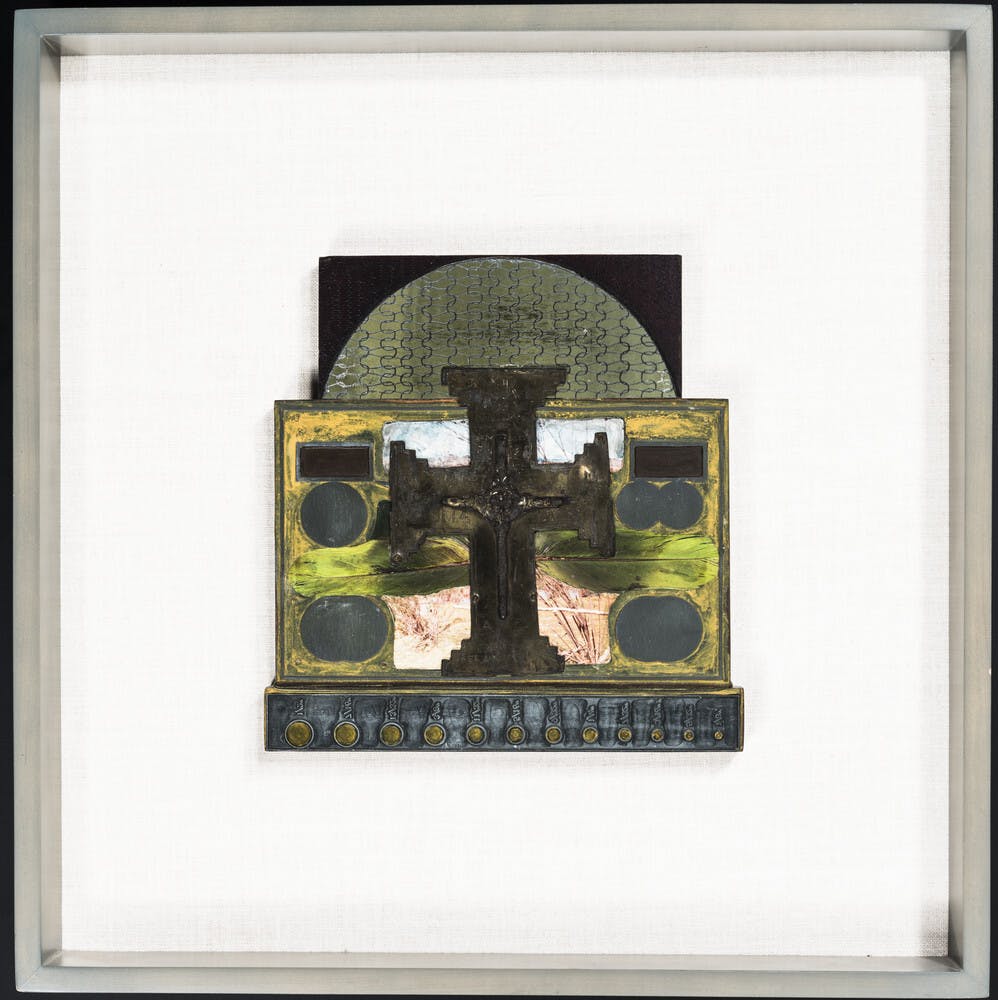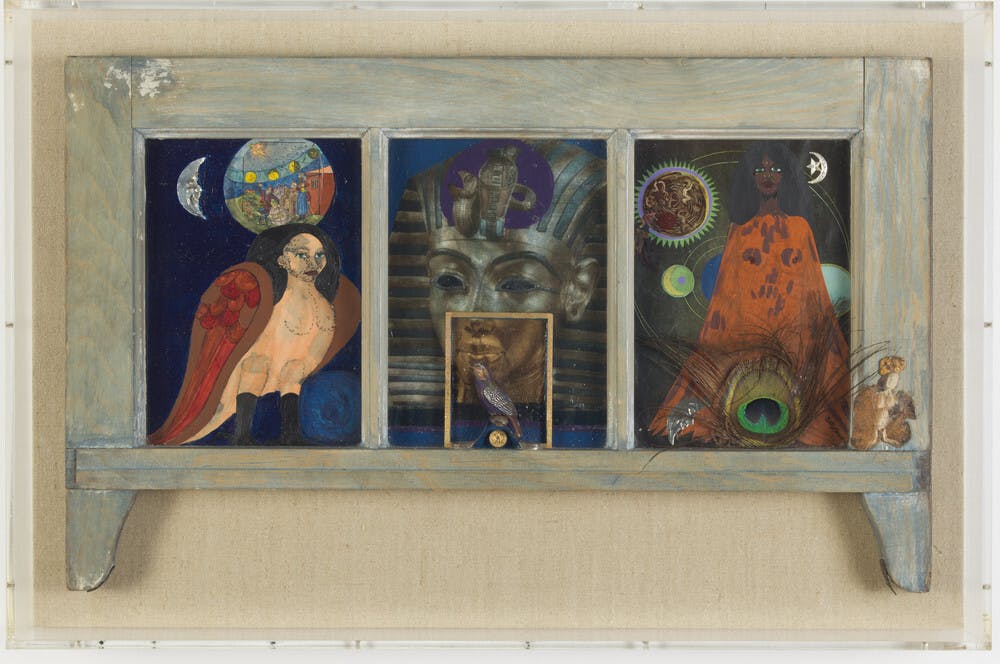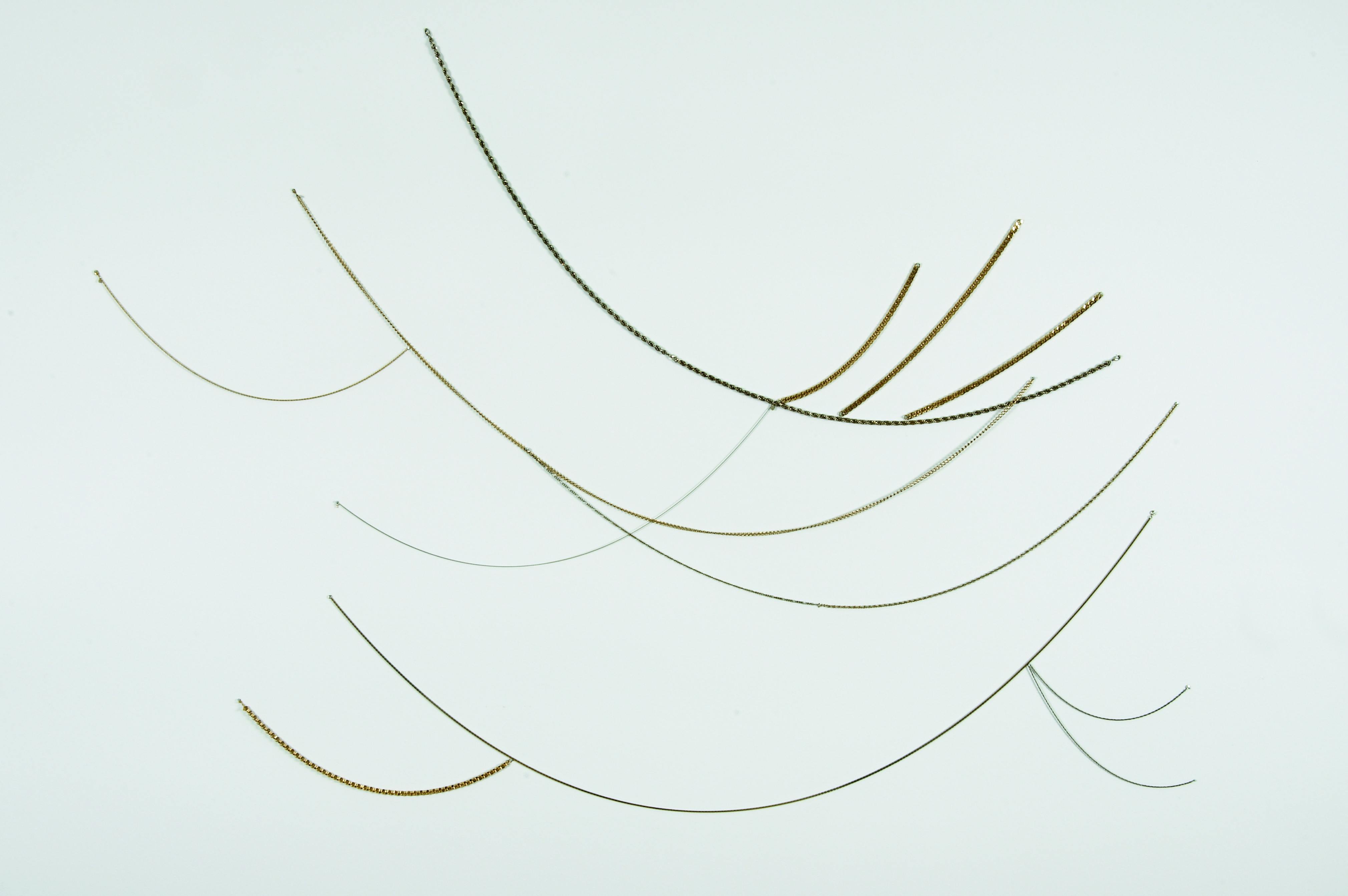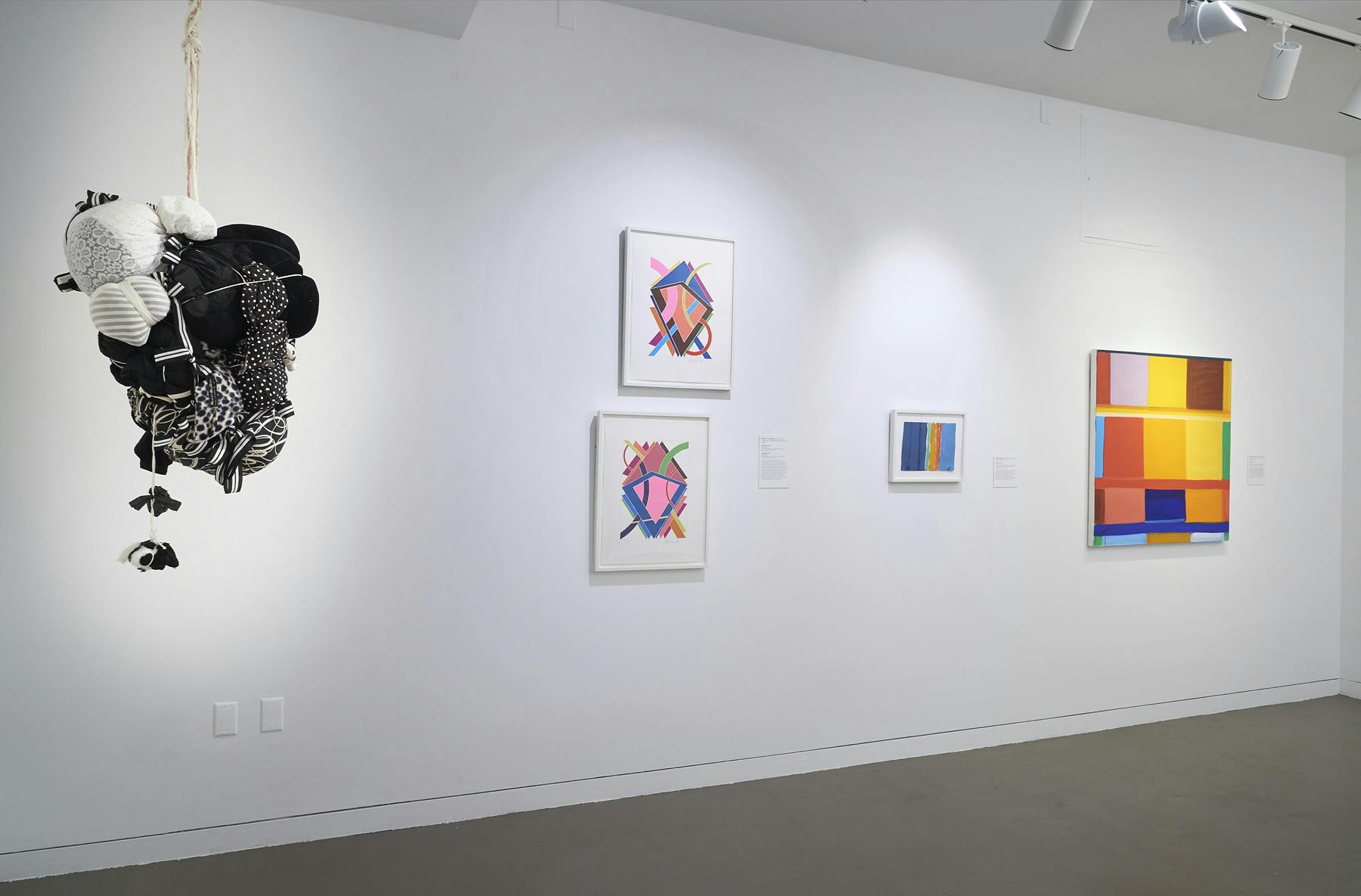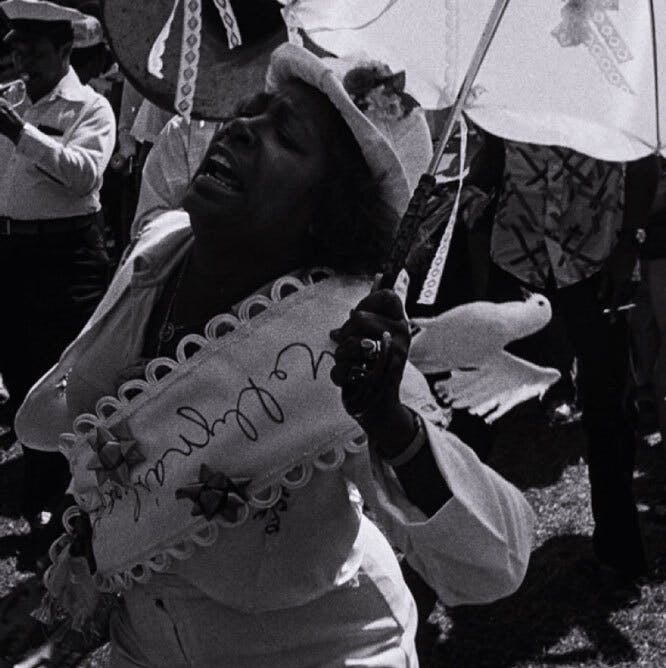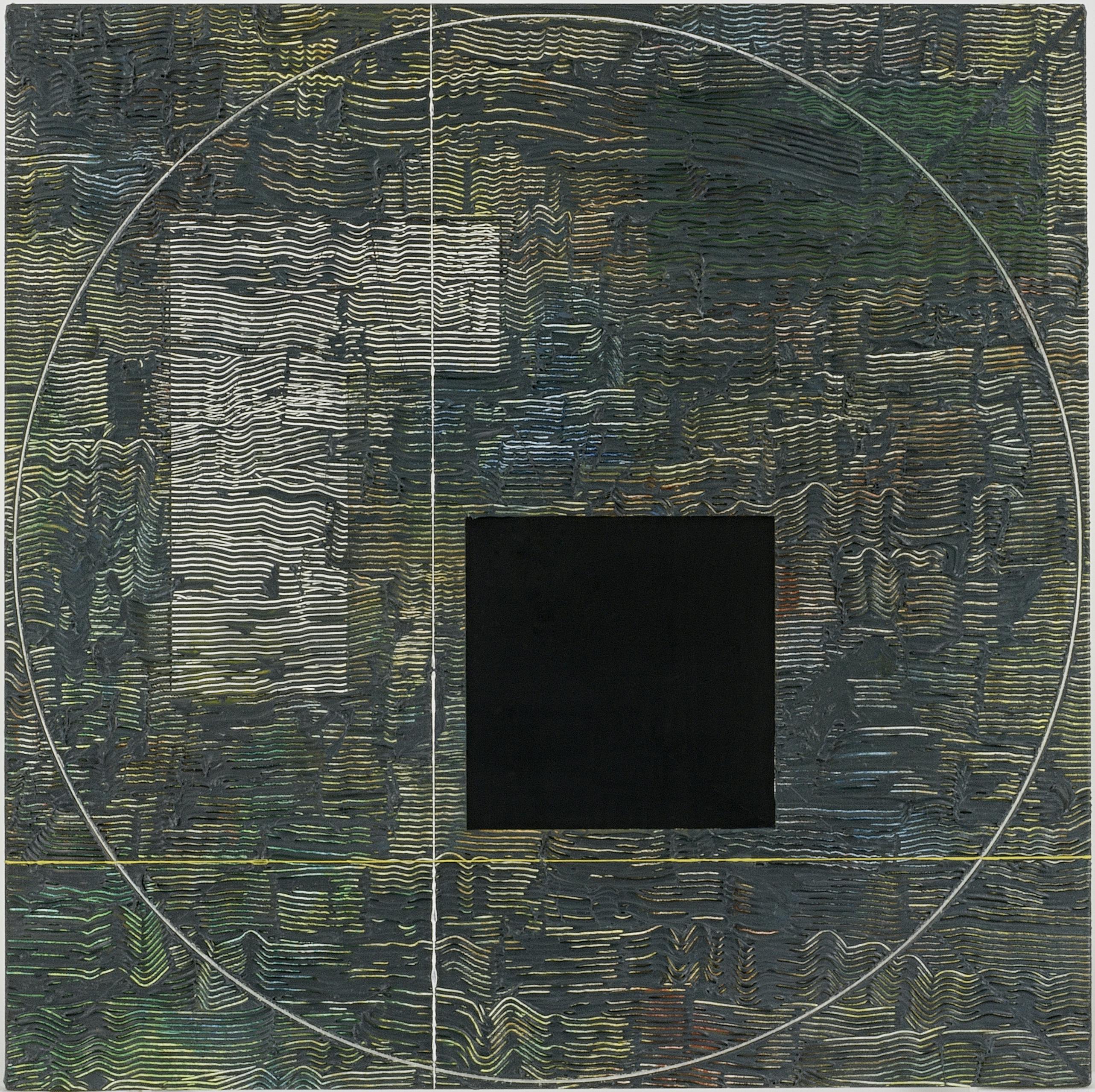Betye Saar
(b. 1926)Since the 1960s, Betye Saar has developed an incisive multimedia practice that confronts, critiques, and reframes racist representations of Black people.
Biography
Betye Saar’s assemblages, prints, and mixed media works investigate the convergence of spirituality, identity, and femininity, and challenge stereotypical representations of blackness.
Born in Los Angeles, she grew up in Pasadena, though Saar regularly visited her paternal grandmother who lived in Watts. During those visits, she witnessed Simon Rodia constructing the Watts Towers, a monumental architectural sculpture made of found materials—and learned that any item could be used to make art. She initially studied design as an undergraduate student but turned toward fine art following postgraduate courses in printmaking.
In the 1960s, Saar combined her prints with found photographs and objects such as windows. The 1965 Watts Riots informed her thinking about the artist’s ability to transform events and creatively contribute to resistance movements. She embraced assemblage, as its myriad opportunities afforded complex works with layered meanings. In 1970, she and artist David Hammons saw an exhibition of African, Egyptian, and Oceanic art while in Chicago, an experience that solidified her commitment to speaking to viewers across cultures through her art. Since that time, she has created multimedia works combining found objects, childhood and family heirlooms, and items gathered from trips taken to Europe, Mexico, and Haiti. Through explorations of stereotypical figures such as Aunt Jemima, Saar reimagines cultural narratives and reveals marginalized and hidden histories.
Saar earned her BA from the University of California, Los Angeles, and pursued graduate coursework at California State University at Long Beach, the University of Southern California, and California State University at Northridge. She received a John Simon Guggenheim Fellowship (1991); the Skowhegan Medal for Sculpture (2018); and the Wolfgang Hahn Prize from the Gesellschaft für Moderne Kunst am Museum Ludwig (2020). The Studio Museum has presented her work in exhibitions such as Rituals: The Art of Betye Saar (1980); Tradition and Conflict: Images of a Turbulent Decade 1963-1973 (1985); and Circa 1970 (2016).
Exhibitions and Events
Betye Saar
(b. 1926)Since the 1960s, Betye Saar has developed an incisive multimedia practice that confronts, critiques, and reframes racist representations of Black people.
Energy of the Arts, 1989
Biography
Betye Saar’s assemblages, prints, and mixed media works investigate the convergence of spirituality, identity, and femininity, and challenge stereotypical representations of blackness.
Born in Los Angeles, she grew up in Pasadena, though Saar regularly visited her paternal grandmother who lived in Watts. During those visits, she witnessed Simon Rodia constructing the Watts Towers, a monumental architectural sculpture made of found materials—and learned that any item could be used to make art. She initially studied design as an undergraduate student but turned toward fine art following postgraduate courses in printmaking.
In the 1960s, Saar combined her prints with found photographs and objects such as windows. The 1965 Watts Riots informed her thinking about the artist’s ability to transform events and creatively contribute to resistance movements. She embraced assemblage, as its myriad opportunities afforded complex works with layered meanings. In 1970, she and artist David Hammons saw an exhibition of African, Egyptian, and Oceanic art while in Chicago, an experience that solidified her commitment to speaking to viewers across cultures through her art. Since that time, she has created multimedia works combining found objects, childhood and family heirlooms, and items gathered from trips taken to Europe, Mexico, and Haiti. Through explorations of stereotypical figures such as Aunt Jemima, Saar reimagines cultural narratives and reveals marginalized and hidden histories.
Saar earned her BA from the University of California, Los Angeles, and pursued graduate coursework at California State University at Long Beach, the University of Southern California, and California State University at Northridge. She received a John Simon Guggenheim Fellowship (1991); the Skowhegan Medal for Sculpture (2018); and the Wolfgang Hahn Prize from the Gesellschaft für Moderne Kunst am Museum Ludwig (2020). The Studio Museum has presented her work in exhibitions such as Rituals: The Art of Betye Saar (1980); Tradition and Conflict: Images of a Turbulent Decade 1963-1973 (1985); and Circa 1970 (2016).
